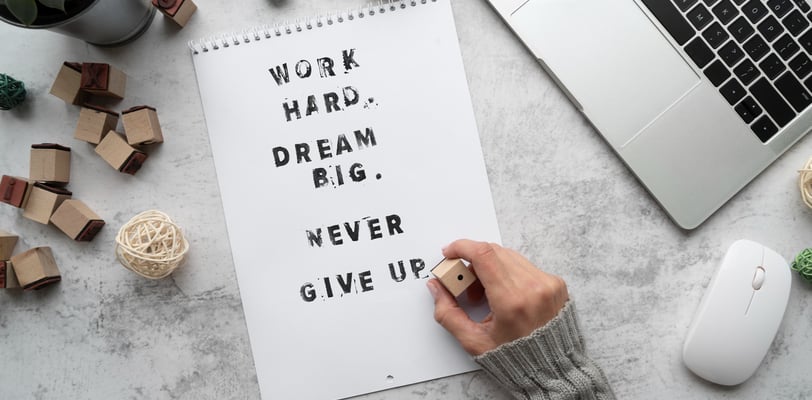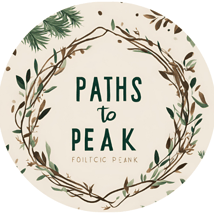Unlock Your Full Potential with Paths to Peak
Proven Work Life Balance Strategies to Help High Performers Thrive
Discover practical and proven work life balance strategies designed to help high performers reduce stress, boost productivity, and thrive in both career and personal life.
PRODUCTIVITY
Ipog
5/10/20255 min read
Work Life Balance Strategies for High Performers
In today’s always-on, hyper-connected culture, success is often equated with non-stop hustle. For high achievers, the pressure to always be "on" can feel like a badge of honor. But here's the hard truth: constant hustle isn’t sustainable. Even the most driven professionals need breathing room.
So, how do you pursue excellence without sacrificing your health, relationships, or peace of mind? The answer lies in work life balance strategies that are practical, realistic, and grounded in science.
Let’s explore how high performers can redefine success and finally learn how to balance work and life, not just for today, but for the long run.
1. Redefining Success Beyond the Hustle
Most of us are raised with a vision of success that includes long hours, a jammed calendar , and little time to recover. But studies from the World Health Organization (WHO) and, International Labour Organization reveal that people working 55+ hours a week are at greater risk of heart disease and stroke by more than 30%.
The takeaway? Too much of a good thing ends up doing more harm than good.
Success does not have to equate with burnout. It can also mean:
• Having energy to play with your kids at the end of the day
• Focused, not frazzled
• Creating a legacy without losing your joy
• Advancing in your career while still having a life
Redefining success means moving beyond the focus on quantity (hours worked) to a focus on quality (impact felt). Adopting this mindset makes balance a strategic advantage, not a liability.
Instead of wearing exhaustion and busyness as a badge of honor, think of clarity, calm, and contentment as your measure of success.
2. The Myth of Multitasking
Multi-tasking is typically a mark of high performance, and Merry Mutts are so high-achieving. But researchers at Stanford University have found that multitasking is less productive than doing a single thing at a time, and can actually reduce productivity by about 40 percent.
Why? Because the brain just isn’t wired to do two demanding tasks simultaneously. What you’re doing is switching tasks, and that switch comes with a cost.
Consider this:
• It takes an average of 23 minutes to get back to deep-focus work each time you switch between tasks (source: University of California, Irvine).
• Some research has connected multitasking to elevated levels of cortisol, the stress hormone.
• Monitor hopping contributes to mental fatigue, diminished memory, and reduced creativity.
Instead, try this:
Time-block your day: Dedicate chunks of time to specific tasks without interruptions.
Single-task with intention: Focus on one thing at a time for better quality work.
Use the Pomodoro technique: 25-minute focused work, 5-minute break. Repeat.
Eliminate digital noise: Turn off notifications. Use "Do Not Disturb" modes.
Once you abandon the illusion of multitasking, you acquire sharper focus, less stress, and more time in your day. Your brain (and performance) will thank you.
3. Delegate Like a Pro: Prioritize What Matters
If you’re a high performer, you probably enjoy control. But being a one-man band isn’t a strength — it’s a bottleneck.
Smart delegation isn’t about getting others to do your work; it’s about acknowledging your strengths and letting others shine in theirs. Leaders who are good delegators have higher-performing teams and suffer less stress, according to Harvard Business Review.
Here’s how to delegate well:
Identify tasks that drain you but could be done by someone else
Use the 70% rule: If someone can do it 70% as well as you, let them do it
Focus on high-leverage activities: Strategy, vision, decision-making, client relationships
Empower others with clear expectations and ownership
Priority is also critical to balancing. Focus on using the Eisenhower Matrix to remove what’s:
• Urgent and important: Do now
• Important but not urgent: Plan it
• Urgent but not important: Assign it
•Neither: Eliminate it
When you eliminate activities that do not match your distinct value, you make room for creativity, concentration, and rejuvenation.
4. Weekly Check-Ins: Small Adjustments, Big Impact
We schedule our days, but avoid ourselves. A little weekly self-review goes a long way in recognizing what’s working — and what’s not.
Ask yourself:
What drained me this week?
What energized me?
Did I say "yes" to things I should have declined?
Did I make time for what matters?
What can I adjust for next week?
This practice invites clarity, accountability, and course correction before burnout sets in. Regular self-reflection provides job satisfaction, emotional regulation, and even enhances decision-making, according to a study in the Journal of Applied Psychology.
Pro Tip: Combine your check-in with a ritual:
•Sunday evening journaling
•A solo nature walk
• Tea and Meditation -A quiet cup of tea and reflections
Weekly check-ins are your personal alignment tool. They keep you from straying too far away from your values and aims.
5. Schedule Rest Like a Meeting
High performers feel guilty about resting. But what we know from neuroscience is that rest is not merely a luxury that you deserve if you’ve taken care of everything else. Downtime is when the brain solidifies memories, enhances creativity, and processes complex issues. In reality, science tells us that the DMN in our brain is more active when we are at rest, allowing greater introspection and emotional digestion.
What rest looks like for high performers:
Block "white space" on your calendar — time to do nothing, reflect, or recharge
Plan active rest: walks, yoga, music, journaling
Protect sleep like your next promotion depends on it (because it might)
Say no to evening meetings or late-night emails — your brain needs closure
Powerful rest isn’t only about sleep. It’s about mentally detaching from work so that your nervous system can power down. Without it, your productivity and creative prowess will tank eventually. One high performer shared, “Once I started scheduling downtime just like client meetings, I felt more energized and less reactive. I became a better leader and a better human.”
Final Thoughts: Balance Is a Competitive Edge
True high performance doesn’t mean being the busiest person in the room. It means showing up as your best self, consistently, over the long haul. And that requires intentional work-life balance strategies that are personal, practical, and powerful.
If you’re wondering how to balance work and life while still striving for greatness, start small:
Say no to what doesn't serve you
Say yes to rest, reflection, and realignment
Choose quality over quantity
Protect your peace as fiercely as you pursue your goals
Because the most successful people aren’t the ones who do the most. They’re the ones who know what matters most — and protect it fiercely.
Action Step: This week, pick one of the above strategies and try it out. Maybe it’s blocking rest into your calendar. Maybe it’s having your first weekly check-in. Let it be imperfect, but let it begin.









Get in touch
I'd love to hear from you! Reach out with your questions, feedback, or just to chat about your thoughts.
pathstopeak@email.com
